This gallery features phonograph ads
from 1920 to 1930.

The Victrola brings
the "masterworks into the home for all to enjoy." 1920
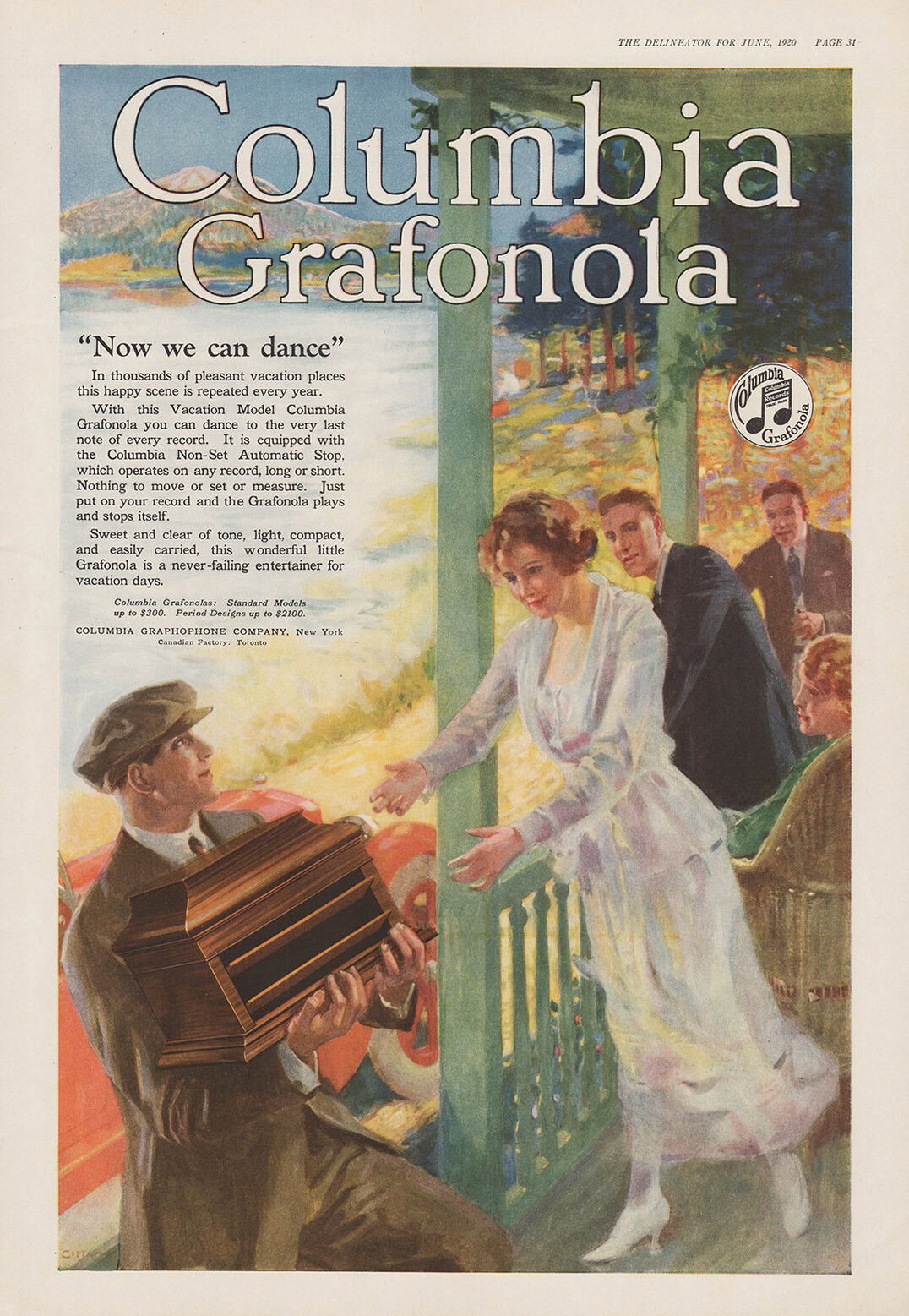
The Columbia Grafonola
"Vacation Model" - The Delineator, 1920

"Exclusive Columbia
Artists in the Latest Song Hits," Columbia Grafonola - The
Ladies' Home Journal, March, 1920
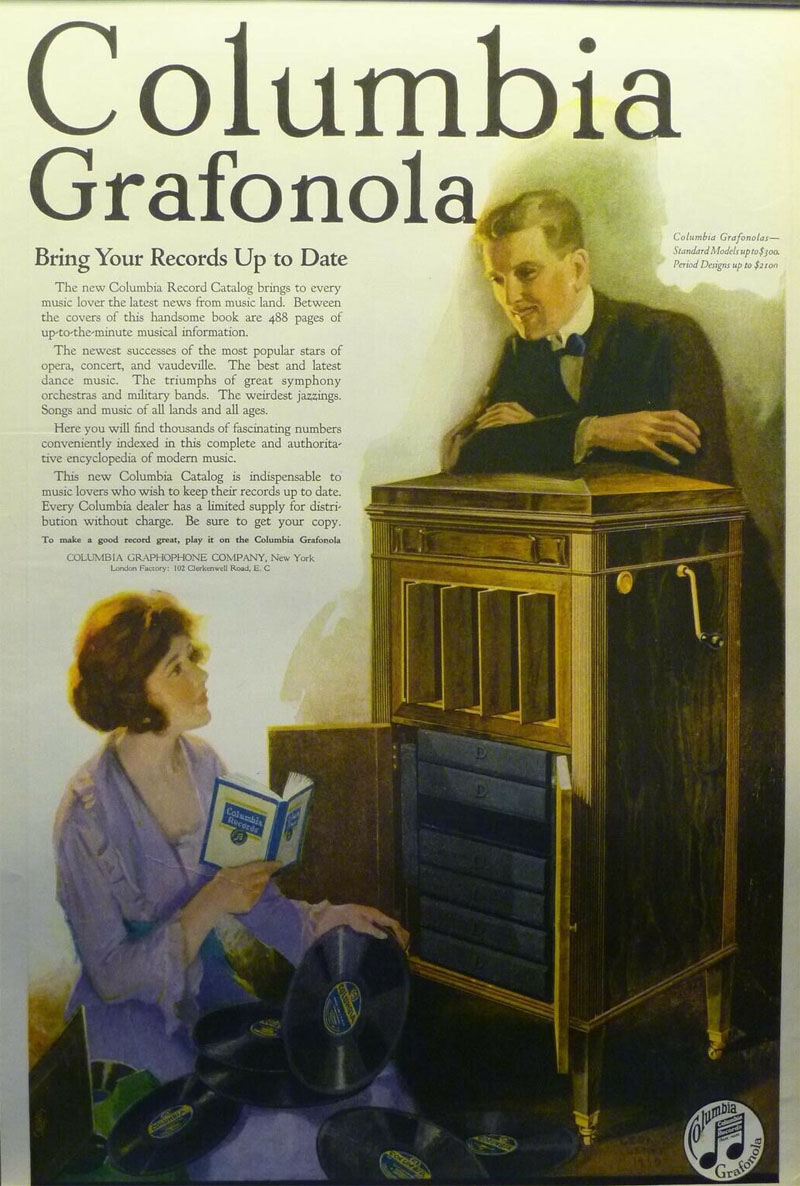
Bring Your Records
Up to Date," Columbia Grafonola - 1920
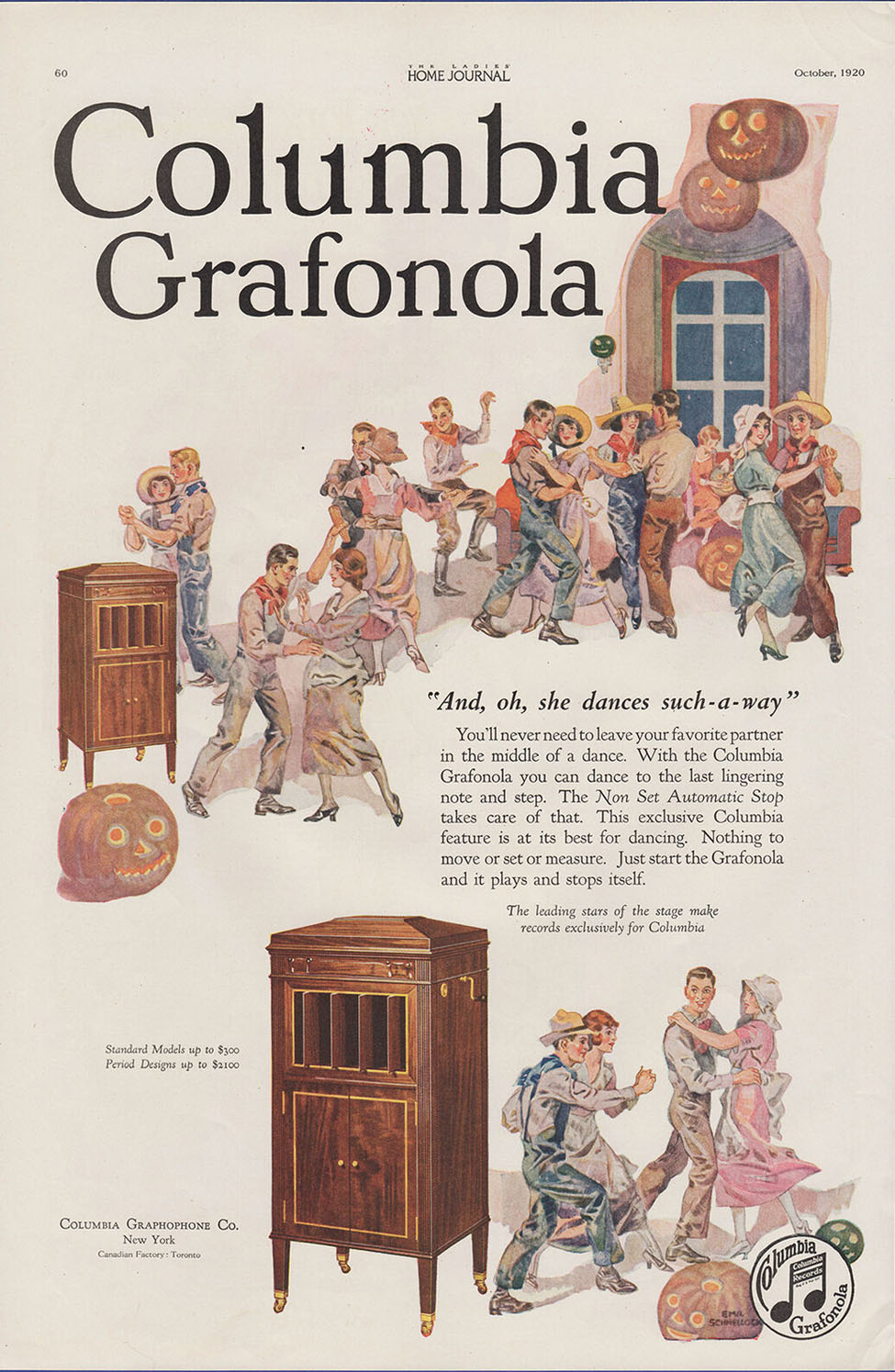
Columbia Grafonola,
The Ladies' Home Journal, October 1920
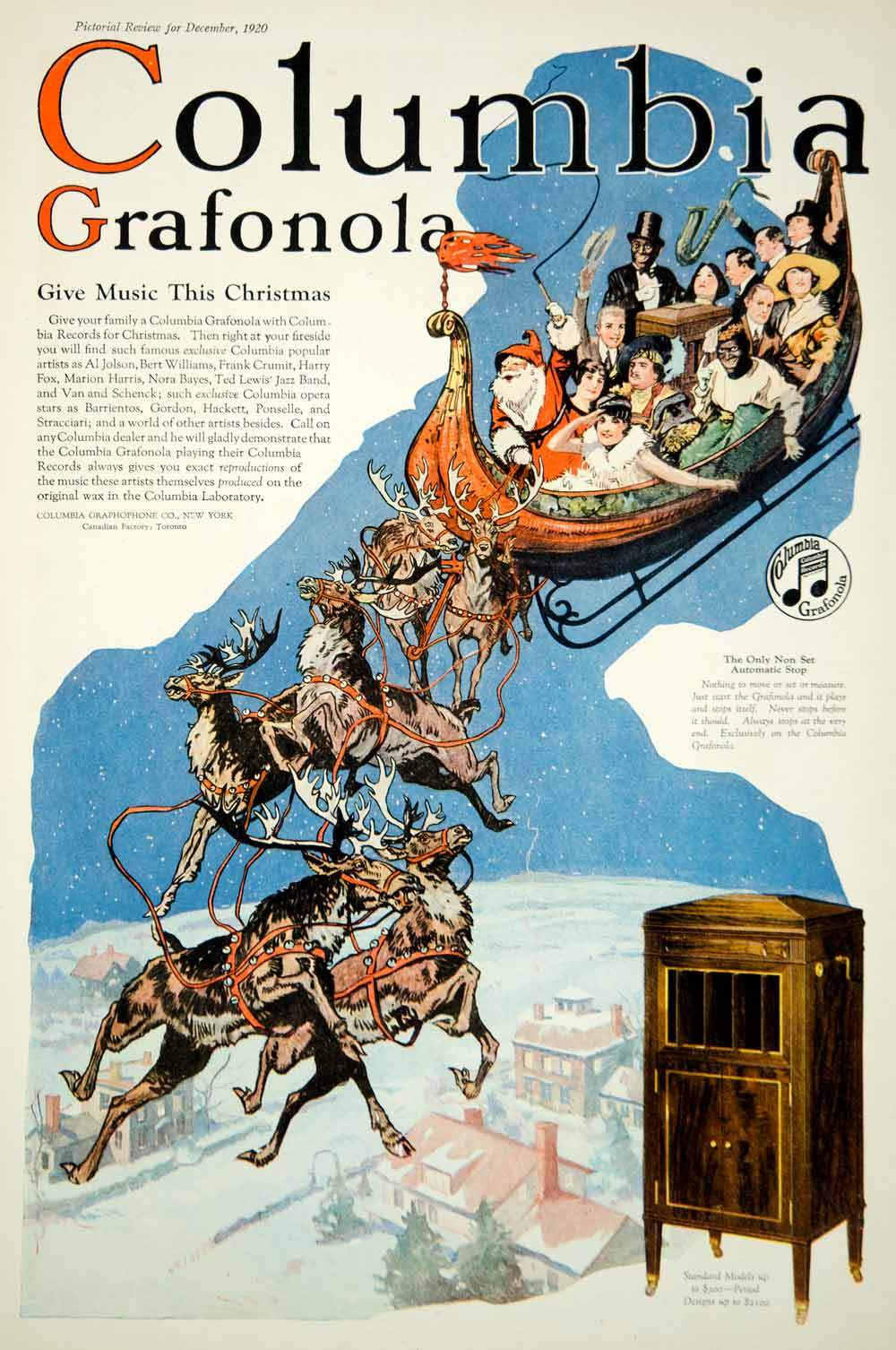
"Give your family
a Columbia Grafonola with Columbia Records for Christmas."
Music right at your fireside. Pictorial Review, December
1920

Pathé is Supreme
Phonograph, 1920.
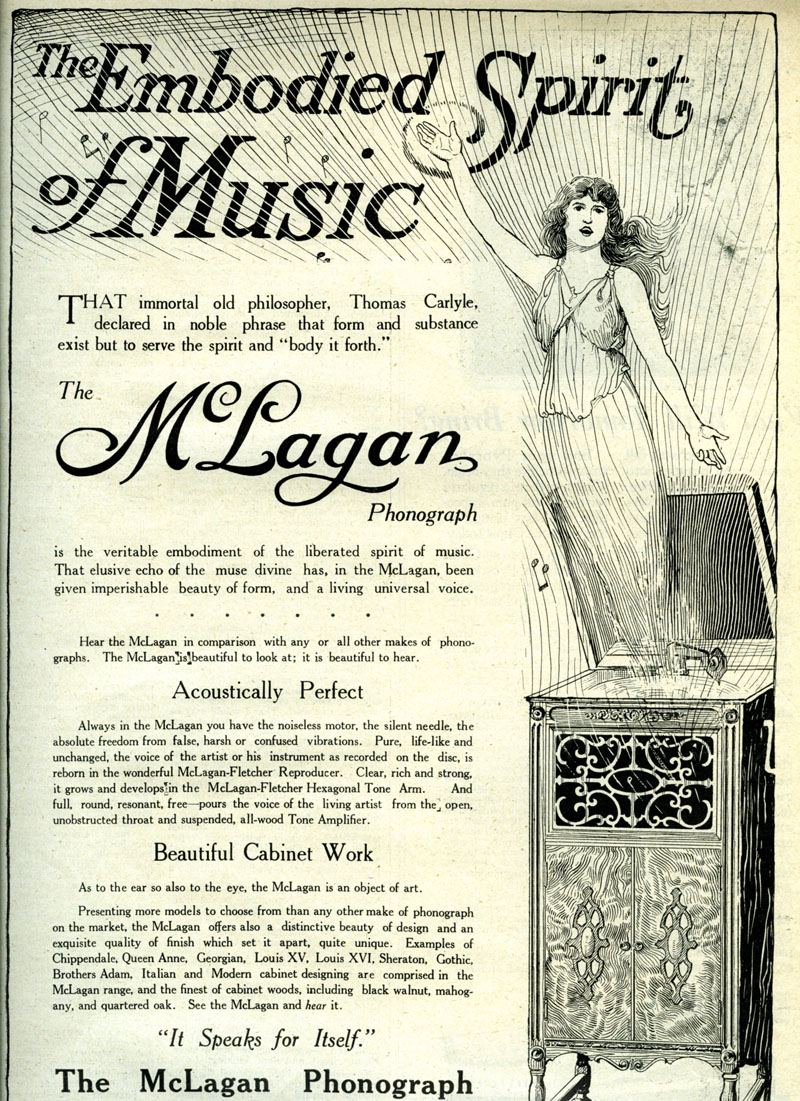
"The veritable
embodiment of the liberated spirit of music," MacLean's Magazine,
1921
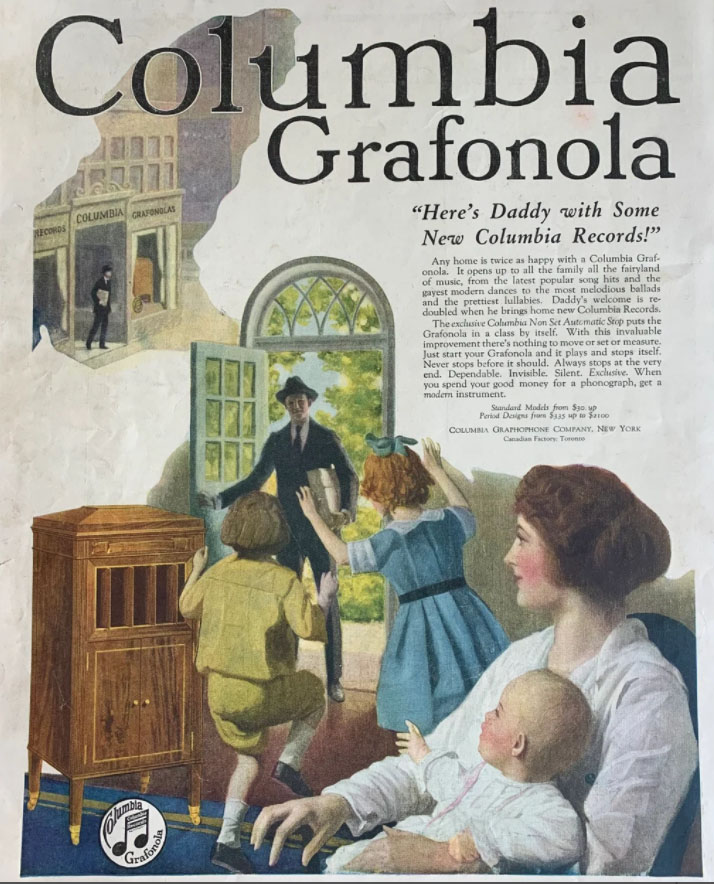
"Here's Daddy
with Some New Columbia Records," 1921
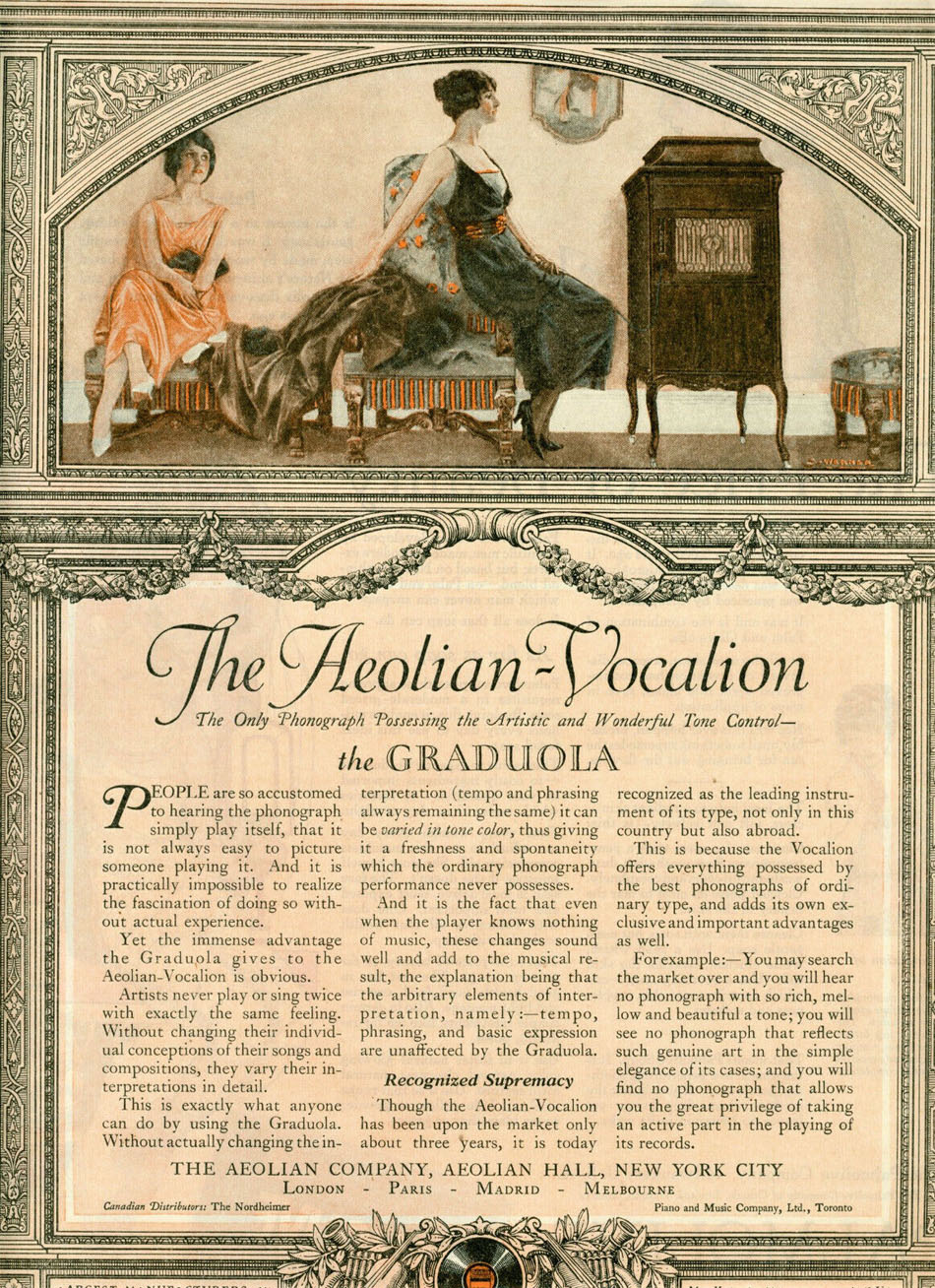
The Aeolian-Vocalion
with its "Graduola" allows you in your own home "the
great privilege of taking an active part in the play of its records."
You are able to vary "in tone color" the artists' performances
with the "Artistic and Wonderful Tone Control - the Graduola.
1921
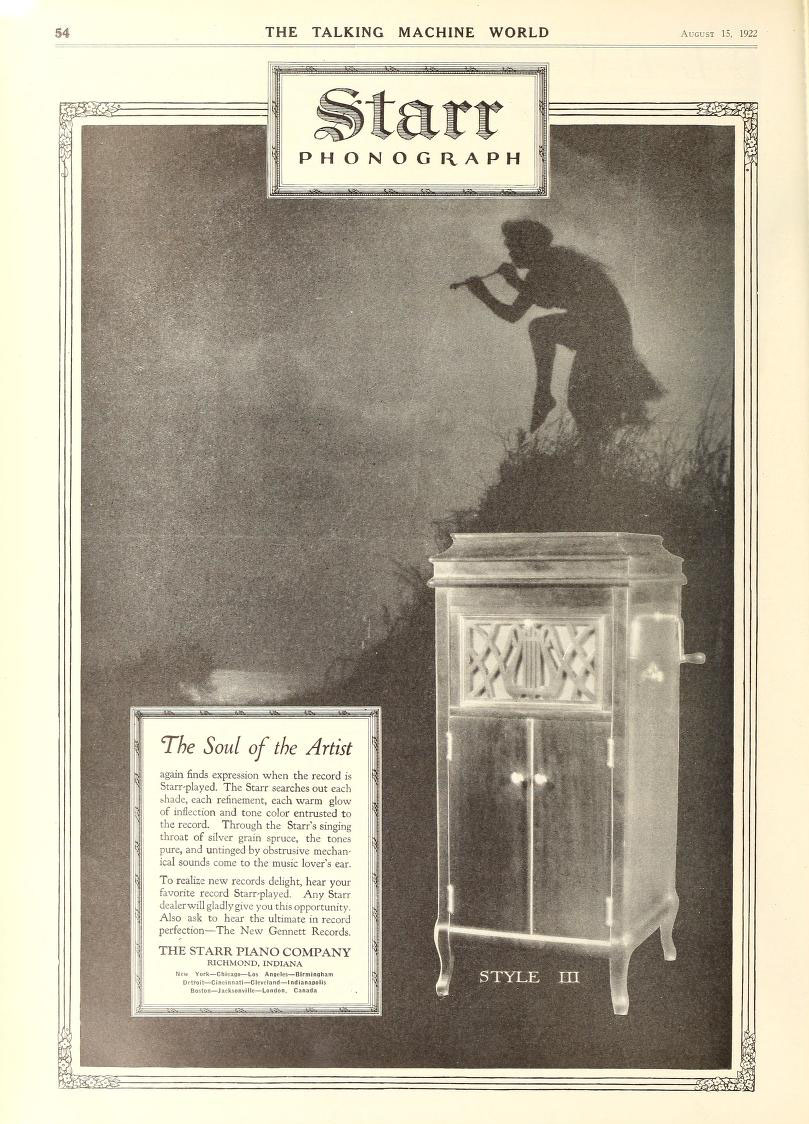
The Starr Phonograph
plays The Soul of the Artist - The Talking Machine World,
August 1922
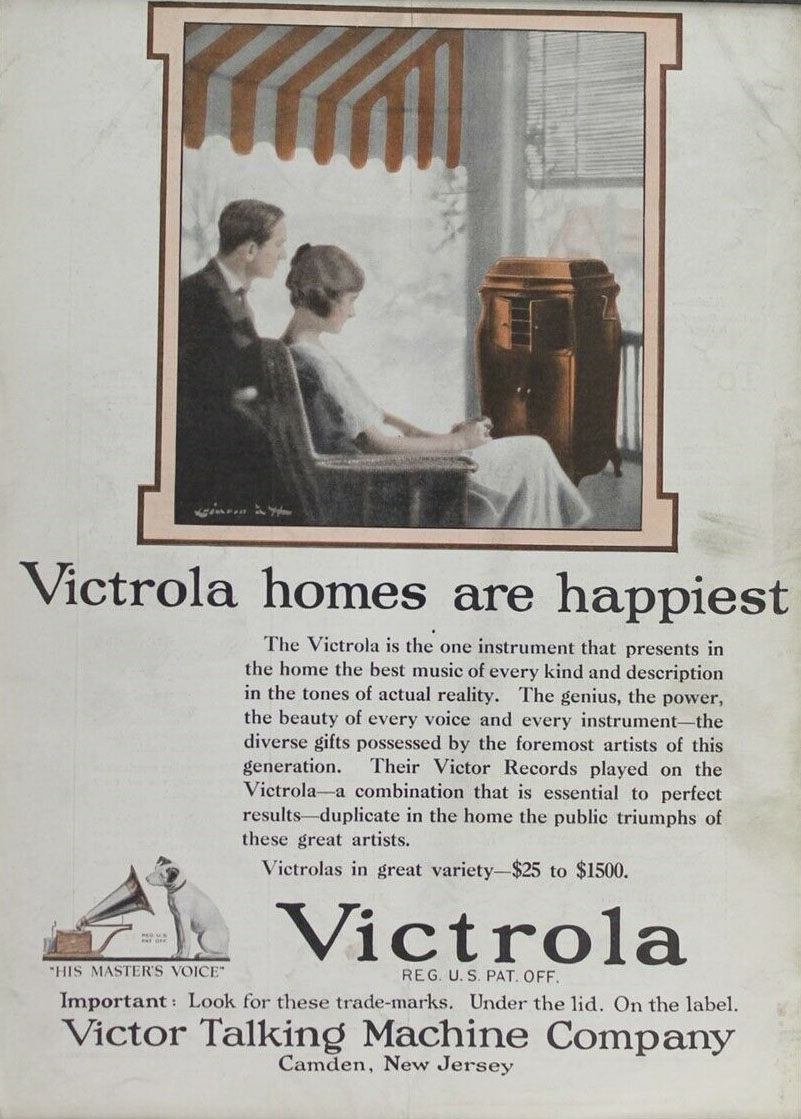
"Victrola homes
are happiest," 1922
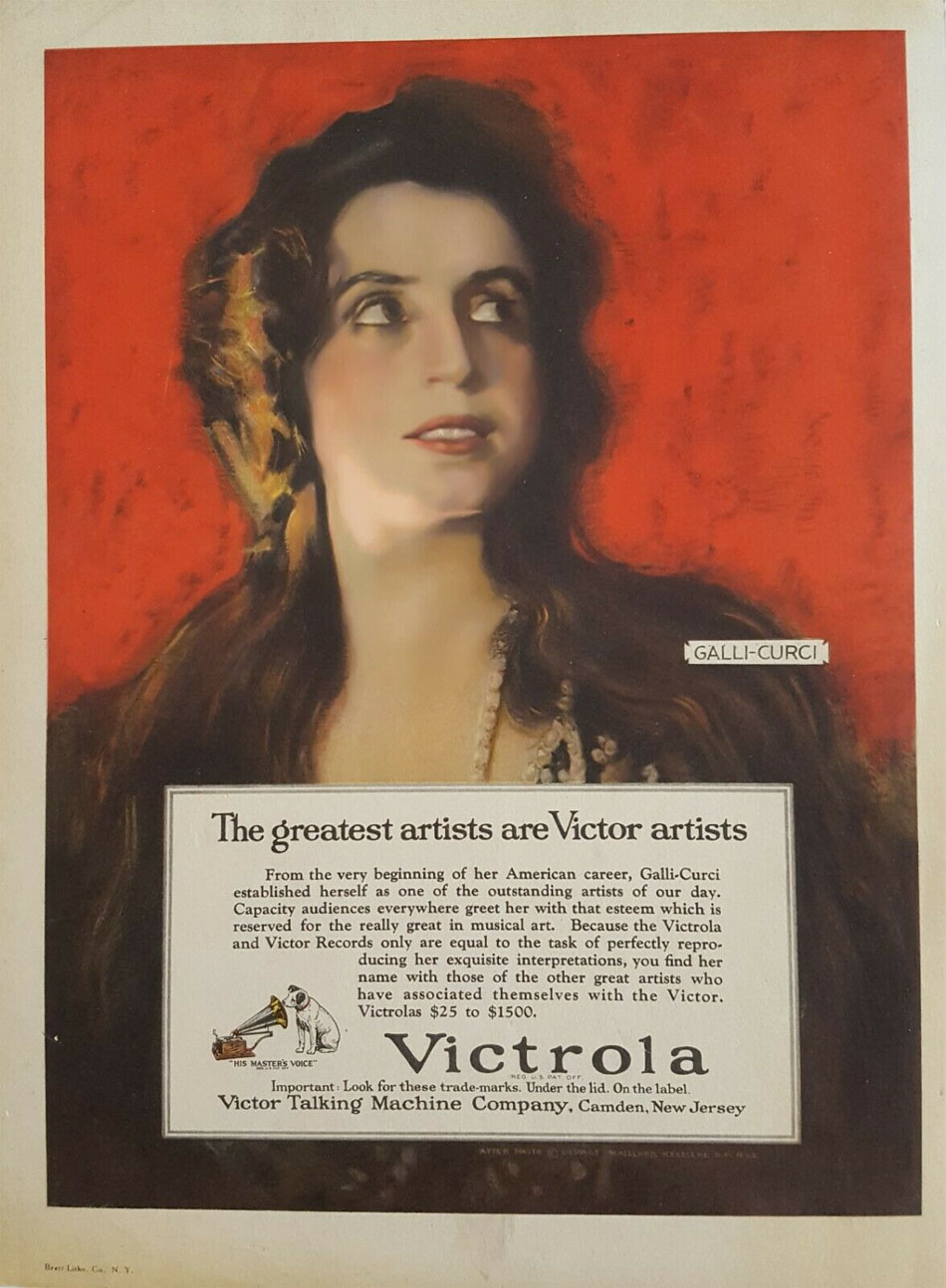
Galli-Curci is "one
of the outstanding artists of our day." "The greatest
artists are Victor artists." 1923

"The music of
all the world is in the Victor Record Catalog." 1923
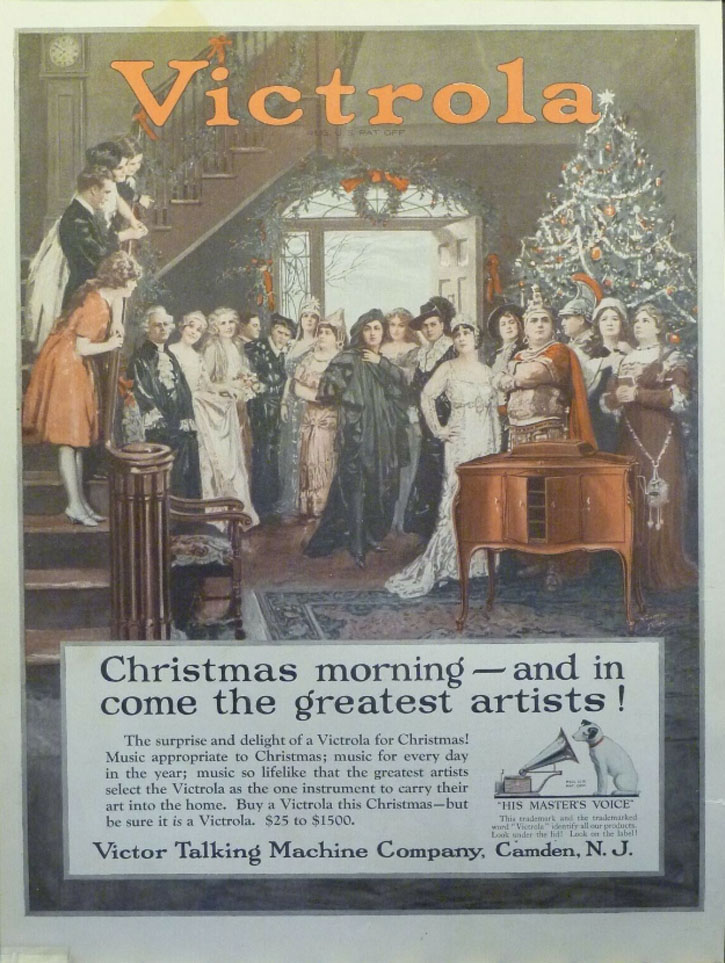
"Christmas morning--and
in come the greatest artists!" Christmas Ad 1923
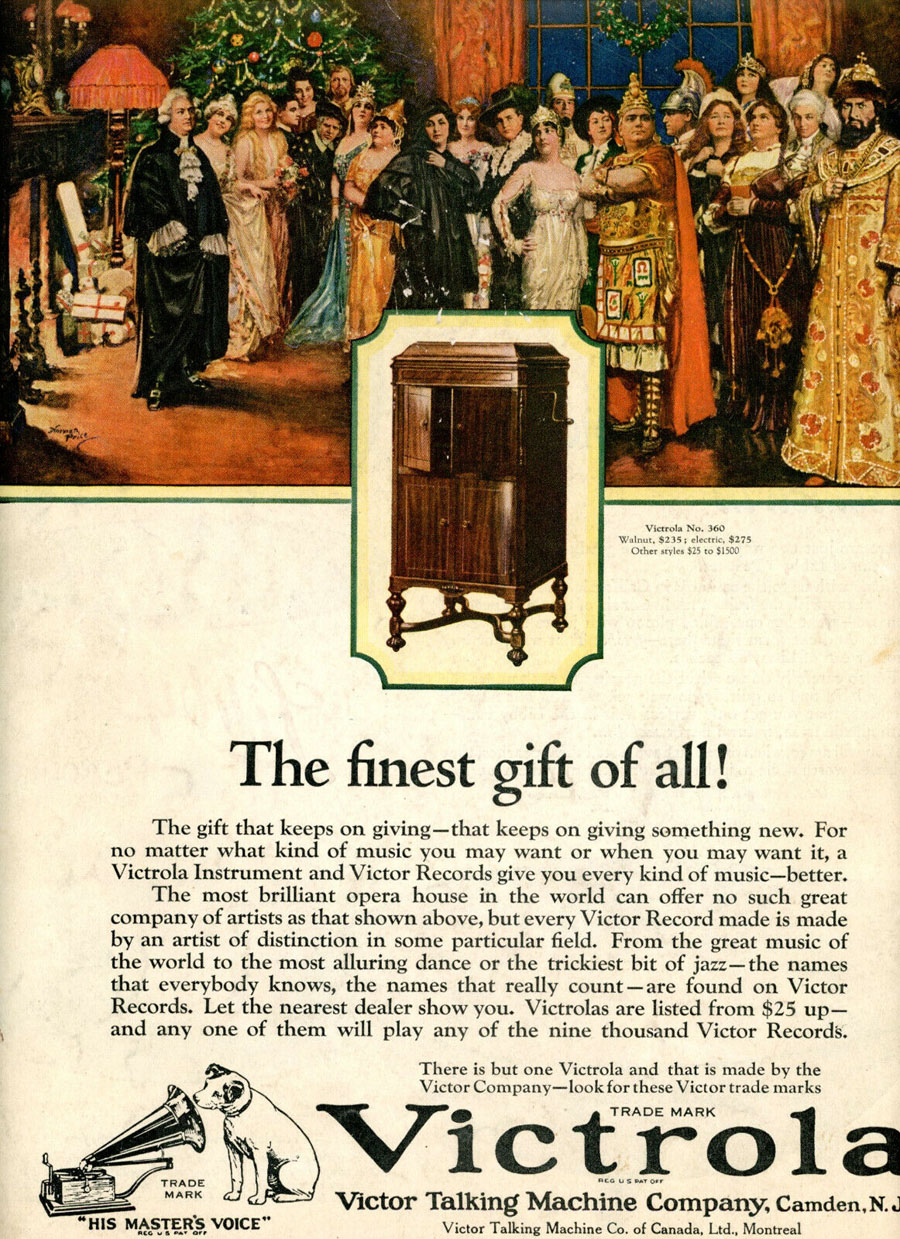
"The finest
gift of all! Victrola," Christmas Ad 1924
With the growing popularity of radio
in the early 1920's combination sets of radios and phonographs were
first put together by some small manufacturers around 1922. The
Emerson Phonograph Co. is said to have "introduced
the first radio-phonograph combination sold in the United States."
The Radio Corporation of America (RCA) in 1924 offered their Radiola
IX as a radio that could fit "snuggly inside your phonograph
cover!" Brunswick put the Radiola IX in their phonographs at
the end of 1923 and Sonora was also an early seller of combination
Radio-Phonographs. "
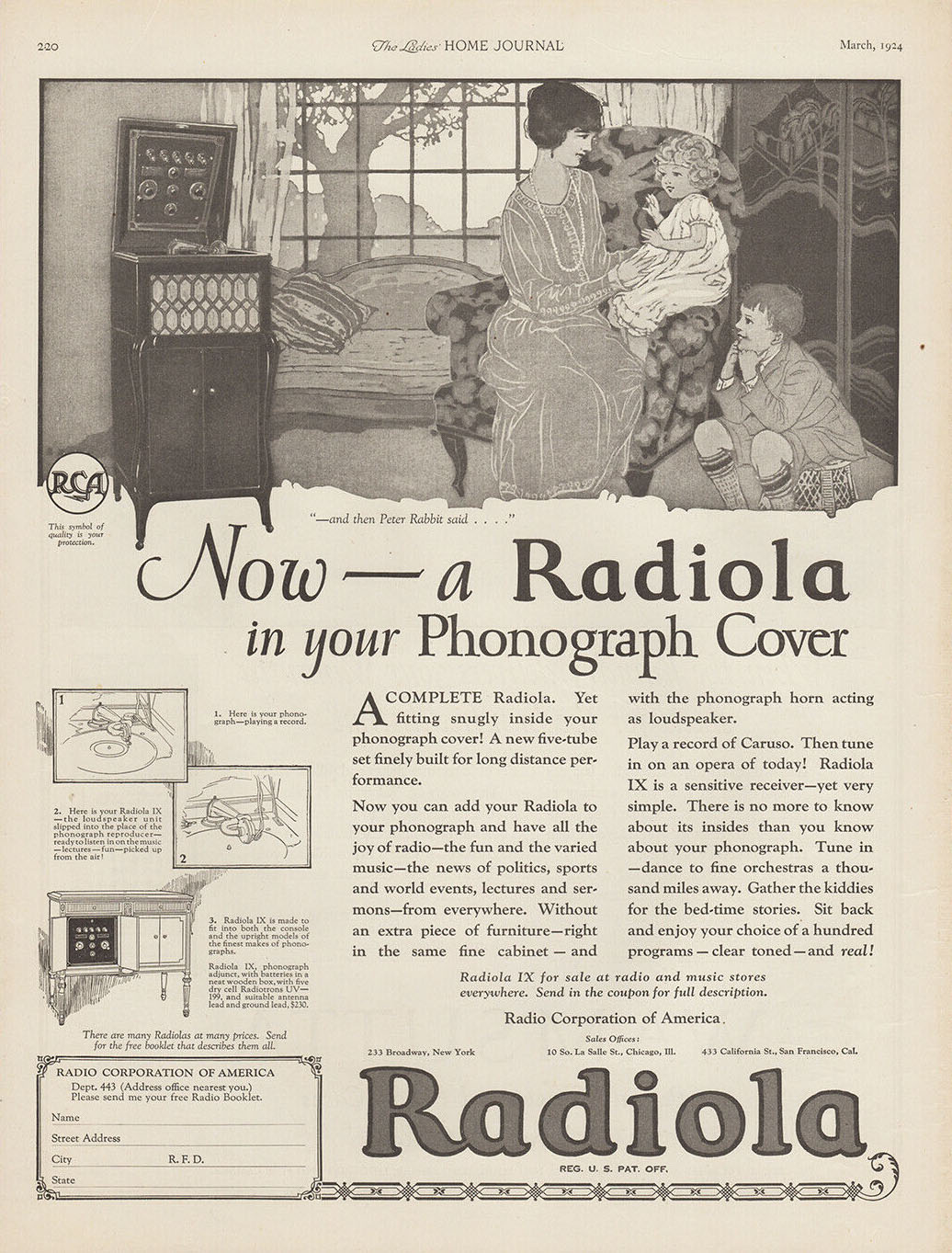
The Radiola IX
was made to fit into a console or upright phonograph. The
Ladies' Home Journal, March 1924
The new Orthophonic Victrola
and Radiola Super-Heterodyne were combined into one cabinet
in 1925 by the Victor Talking Machine Company. The Ladies'
Home Journal, November 1925
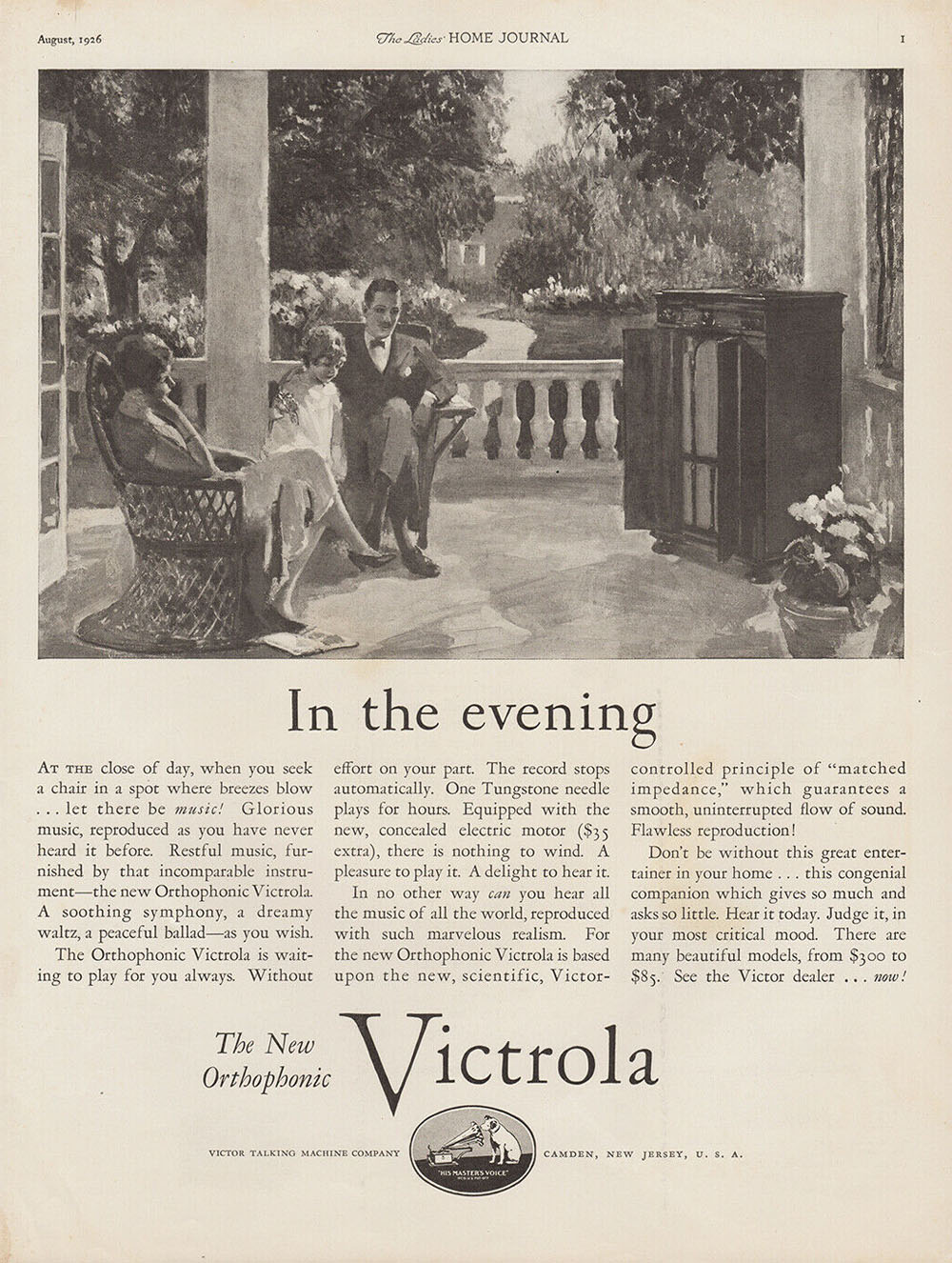
"In the
Evening...this congenial companion which gives so much and
asks so little" The Ladies' Home Journal, 1926
"Waiting
to sing and play for you...the Victrola is the gift that
keeps on giving." 1927 (PM-2032)
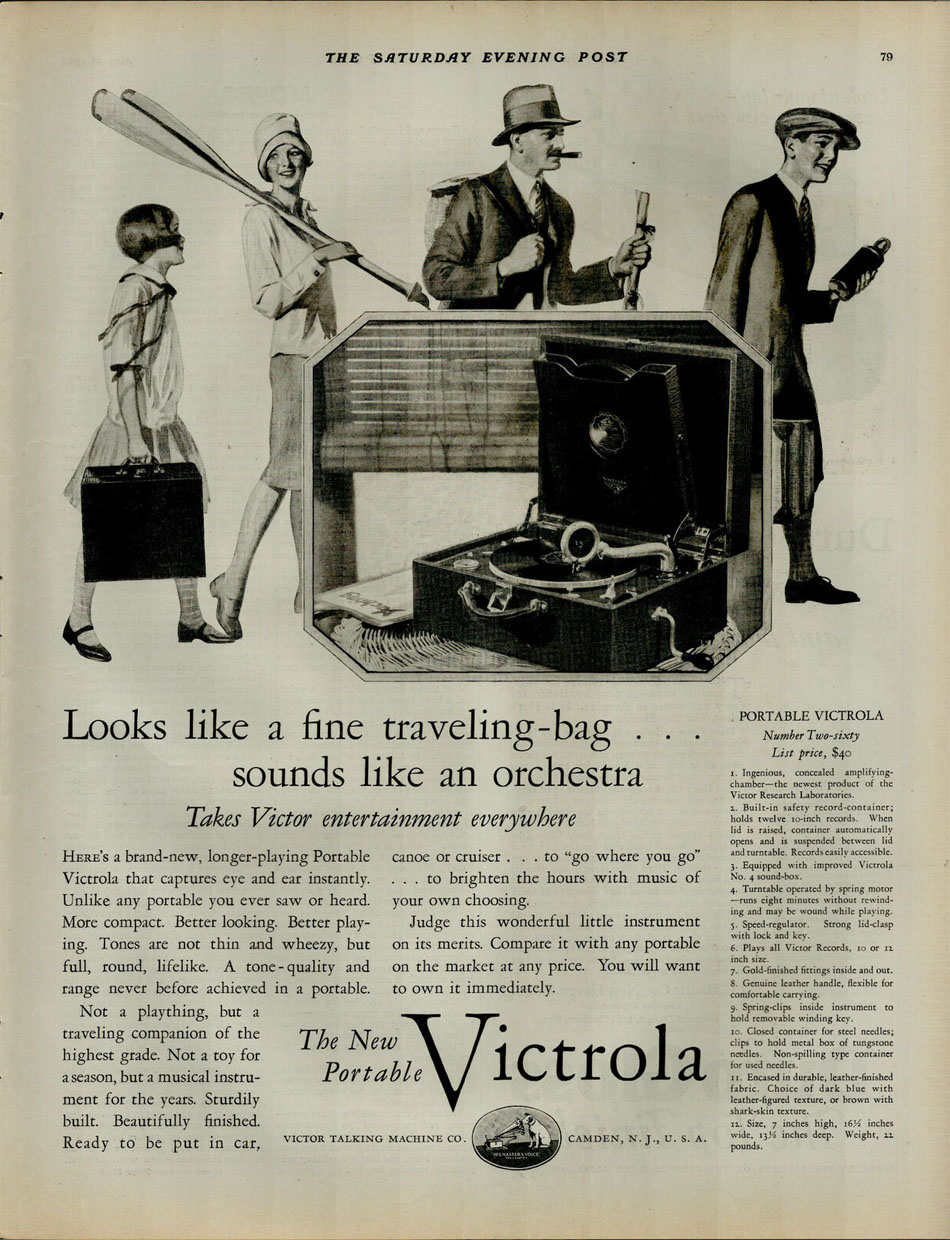
"Take
Victor entertainment everywhere," The Saturday Evening
Post, 1927
"Without stretch of
the imagination, they are right in the very room with
you." 1928 - Edmund Wilson artist